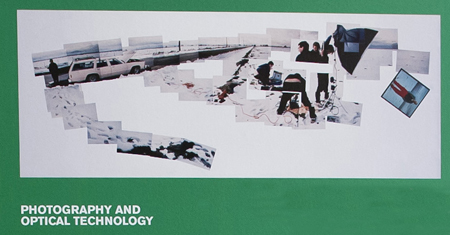
Hockney has had a long-term, love-hate relationship with the camera between periods of intense experimentation and attempts to completely reject its influence.
By the 1970s, the use of photography allowed him to be both subject and observer. Family members and close friends became recurrent subjects, both in photography and other mediums. His parents often posed for him, emulating traditional studio paintings, and in the early 1980s his close friends appeared in photographic composites made up of multiple Polaroid snapshots. Evoking Cubist fragmentation, these photocollages are influenced by the work of Pablo Picasso, whom he greatly admired. In this period, Hockney created over 100 Polaroid images and more than 200 photocollages with a Pentax 110 single-lens reflex camera and a 35 mm Nikon. Also, photocopy machines provided Hockney with another tool to produce numerous prints that he sent by fax and allowed him to work on his own and at great speed. These devices opened up a new world to Hockney’s creative process.
An intense period of investigation on the old masters followed, including research on their use of lenses, mirrors, and other optical tools, such as the camera lucida, which was patented in 1807. Experimenting with how this device could have helped artists from the past, he used it to produce more than 280 portraits in 1999–2000.
More recently, Hockney has used digital technology in creating large-scale landscapes made of numerous elements, as seen in this exhibition. In them, photographs were not used in a preparatory phase, but rather helped the artist map the progress from one painting to another; back in the studio, the images could be assembled in a computer to indicate how the entire work would look.
